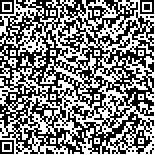下载中心
优秀审稿专家
优秀论文
相关链接
摘要

植被指数是地球陆表植被覆盖度和植被活力的指示因子,对环境监测、植被理化参量估算等应用研究有重要的意义。基于植被的反射光谱特征,通过遥感数据波段的组合,可以计算得到遥感植被指数。传统的植被指数如NDVI、EVI等仅利用有限波段信息的线性或非线性组合构建而成,没有充分利用遥感传感器所提供的多波段遥感信息,通用归一化植被指数UNVI(Universal Normalized Vegetation Index)充分利用了遥感传感器提供的多波段植被光谱信息,因此在反演植被叶绿素、生物量等植被理化参量上较其他传统植被指数更具优势。为方便UNVI指数的计算,本文基于IDL语言开发了UNVI软件插件,可直接作为ENVI商业遥感软件进行调用,并可满足多个传感器的UNVI计算需求。为了验证UNVI的应用效果,以植被总初级生产力GPP(Gross Primary Productivity)估算为例,比较了不同植被指数估算GPP的效果,结果表明:基于UNVI估算的GPP与通量站点获得的GPP具有较高的相关性(相关系数R2为0.79),验证了UNVI在GPP估算方面的优势。本文提供的UNVI软件插件可为遥感研究和应用人员提供便捷的计算工具。
The Universal Normalized Vegetation Index (UNVI) is an improved Vegetation Index (VI) based on the Universal Pattern Decomposition Method (UPDM). However, UPDM-based UNVI involves the calculation of a complex coefficient matrix, which is inconvenient for users. We reformulated the computation of the coefficients of the UPDM without changing its main mathematical formulation to generalize the UNVI in a user friendly manner. We derived new matrices and developed a UNVI software using IDL to facilitate the convenient calculation of the UNVI based on data from MODIS and Lands at TM, ETM, and OLI satellite sensors.
Vegetation information derived from satellite data is highly significant to the operational monitoring of the Earth's land cover. VIs are determined traditionally by calculating directly the algebraic combinations of the reflectance at different bands, that is, from the visible to the SWIR spectral range. These VIs (e.g., NDVI and EVI) were calculated by limited reflectance bands and might cause loss of information. All available data are considered as input variables in UPDM-based UNVI in the calculation of VIs. We provided the code and the coefficient matrices in this study to make UNVI usable for all users and multiple sensors.
For the UPDM-based UNVI, the spectrum of each pixel is expressed as the linear sum of three fixed standard spectral patterns (i.e., water, vegetation, and soil), along with a supplementary one (i.e., yellow leaves), associated with particular objects found on land. The goal of UPDM is to transform the reflectance values of the n bands of a target pixel into three standard coefficients, along with a supplementary one, using standard spectral decomposition patterns. We derived the matrices to facilitate the convenient calculation of the UNVI based on data from the MODIS and Lands at TM, ETM, and OLI satellite sensors. We also provided the software and coefficient matrices of UNVI. We assessed the capabilities of the UNVI to evaluate the Gross Primary Production (GPP) of vegetation compared with the GPP data derived from the flux tower sites. The GPP estimated by UNVI used in this model was GPP∝PAR×VI×VI.
The GPP estimated by UNVI has a higher correlation with the GPP obtained from the flux sites. The R2 between the GPP from the flux sites and that estimated by UNVI is above 0.79 for the mixed forest and deciduous broad-leaved forest vegetation types. This result is consistent with the strong correlation between UNVI and vegetation physicochemical parameters. Thus, UNVI could be applied in estimating vegetation GPP.
In this study, we reformulated the computation of the coefficients of UPDM without changing its main mathematical formulation and provided the index, which was termed UNVI. We also derived new matrices to facilitate the convenient calculation of the UNVI based on data from MODIS and the Landsat-TM, ETM, and OLI satellite sensors. The UNVI could be obtained directly by multiplying the coefficient matrix M and the surface reflectance, which would result in a user friendly computation of UNVI. We developed a software using IDL to facilitate the calculation of the UNVI from different remote sensing images. We applied UNVI in the GPP estimation to introduce the operation of the UNVI software. The results show that the UNVI-based GPP estimation has a high correlation with the GPP obtained from the flux sites, with coefficient R2 above 0.79. Thus, UNVI can be used for vegetation monitoring. The UNVI software provides the important technical support for studies and applications for the remote sensing inversion of vegetation physicochemical parameters and estimation of vegetation GPP.

